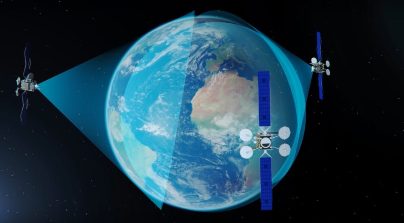ViaSat Inc. announced completion of the critical design review (CDR) of the ViaSat-3 spacecraft, with the payload CDR completed last week and the bus CDR conducted with Boeing in mid-August. ViaSat and Boeing will now build, integrate and test the first two satellites.
These two satellites will provide coverage for the Americas and Europe, the Middle East and Africa (EMEA), respectively. A future satellite will cover the Asia Pacific region, enabling ViaSat to provide global coverage. Operating at Ka-band, each ViaSat-3 satellite is designed to deliver more than 1 Tbps of network capacity, with the flexibility to dynamically direct capacity to where customers are located.
The ViaSat-3 payload is being designed and manufactured by ViaSat at its Tempe, Arizona facility. Boeing is building the all-electric propulsion satellite platform at its factory in El Segundo, California.
Boeing will deliver the payload module structure to ViaSat's satellite integration facility in Tempe, where the payload will be installed and tested. Following completion of payload testing, ViaSat will send the completed payload module back to Boeing, where it will be mated to the spacecraft and tested to ensure readiness for launch and the space environment.
Mark Dankberg, chairman and CEO of ViaSat, said, "We are still on a path to achieve our target bandwidth and the flexibility to dynamically allocate capacity to the most attractive and engaged geographic markets. Completing the CDR process for both the payload and bus programs brings this very unique broadband resource another step closer to launch."
Paul Rusnock, chairman and CEO of Boeing Satellite Systems International, said, "Completing the bus CDR validates that the satellite meets all necessary requirements for production to begin. ViaSat-3 is the largest satellite in both size and power that Boeing is building and one of the largest satellites in the industry. It will be a highly-capable and advanced spacecraft — with greater than 25 kW of power at the end of life — and an ability to take full advantage of the efficiency of its all-electric propulsion."

